Porsche 2009 Annual Report Download - page 232
Download and view the complete annual report
Please find page 232 of the 2009 Porsche annual report below. You can navigate through the pages in the report by either clicking on the pages listed below, or by using the keyword search tool below to find specific information within the annual report.-
 1
1 -
 2
2 -
 3
3 -
 4
4 -
 5
5 -
 6
6 -
 7
7 -
 8
8 -
 9
9 -
 10
10 -
 11
11 -
 12
12 -
 13
13 -
 14
14 -
 15
15 -
 16
16 -
 17
17 -
 18
18 -
 19
19 -
 20
20 -
 21
21 -
 22
22 -
 23
23 -
 24
24 -
 25
25 -
 26
26 -
 27
27 -
 28
28 -
 29
29 -
 30
30 -
 31
31 -
 32
32 -
 33
33 -
 34
34 -
 35
35 -
 36
36 -
 37
37 -
 38
38 -
 39
39 -
 40
40 -
 41
41 -
 42
42 -
 43
43 -
 44
44 -
 45
45 -
 46
46 -
 47
47 -
 48
48 -
 49
49 -
 50
50 -
 51
51 -
 52
52 -
 53
53 -
 54
54 -
 55
55 -
 56
56 -
 57
57 -
 58
58 -
 59
59 -
 60
60 -
 61
61 -
 62
62 -
 63
63 -
 64
64 -
 65
65 -
 66
66 -
 67
67 -
 68
68 -
 69
69 -
 70
70 -
 71
71 -
 72
72 -
 73
73 -
 74
74 -
 75
75 -
 76
76 -
 77
77 -
 78
78 -
 79
79 -
 80
80 -
 81
81 -
 82
82 -
 83
83 -
 84
84 -
 85
85 -
 86
86 -
 87
87 -
 88
88 -
 89
89 -
 90
90 -
 91
91 -
 92
92 -
 93
93 -
 94
94 -
 95
95 -
 96
96 -
 97
97 -
 98
98 -
 99
99 -
 100
100 -
 101
101 -
 102
102 -
 103
103 -
 104
104 -
 105
105 -
 106
106 -
 107
107 -
 108
108 -
 109
109 -
 110
110 -
 111
111 -
 112
112 -
 113
113 -
 114
114 -
 115
115 -
 116
116 -
 117
117 -
 118
118 -
 119
119 -
 120
120 -
 121
121 -
 122
122 -
 123
123 -
 124
124 -
 125
125 -
 126
126 -
 127
127 -
 128
128 -
 129
129 -
 130
130 -
 131
131 -
 132
132 -
 133
133 -
 134
134 -
 135
135 -
 136
136 -
 137
137 -
 138
138 -
 139
139 -
 140
140 -
 141
141 -
 142
142 -
 143
143 -
 144
144 -
 145
145 -
 146
146 -
 147
147 -
 148
148 -
 149
149 -
 150
150 -
 151
151 -
 152
152 -
 153
153 -
 154
154 -
 155
155 -
 156
156 -
 157
157 -
 158
158 -
 159
159 -
 160
160 -
 161
161 -
 162
162 -
 163
163 -
 164
164 -
 165
165 -
 166
166 -
 167
167 -
 168
168 -
 169
169 -
 170
170 -
 171
171 -
 172
172 -
 173
173 -
 174
174 -
 175
175 -
 176
176 -
 177
177 -
 178
178 -
 179
179 -
 180
180 -
 181
181 -
 182
182 -
 183
183 -
 184
184 -
 185
185 -
 186
186 -
 187
187 -
 188
188 -
 189
189 -
 190
190 -
 191
191 -
 192
192 -
 193
193 -
 194
194 -
 195
195 -
 196
196 -
 197
197 -
 198
198 -
 199
199 -
 200
200 -
 201
201 -
 202
202 -
 203
203 -
 204
204 -
 205
205 -
 206
206 -
 207
207 -
 208
208 -
 209
209 -
 210
210 -
 211
211 -
 212
212 -
 213
213 -
 214
214 -
 215
215 -
 216
216 -
 217
217 -
 218
218 -
 219
219 -
 220
220 -
 221
221 -
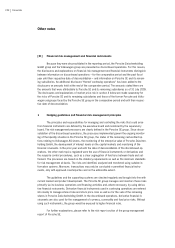 222
222 -
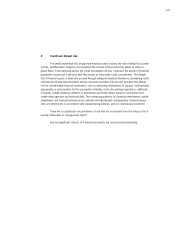 223
223 -
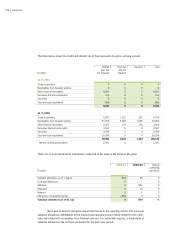 224
224 -
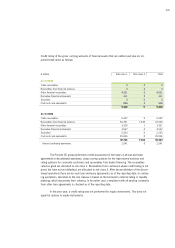 225
225 -
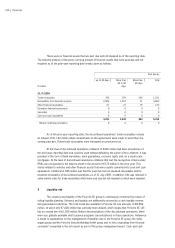 226
226 -
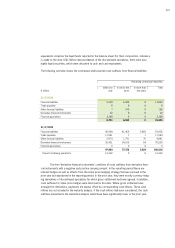 227
227 -
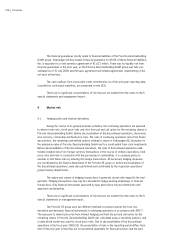 228
228 -
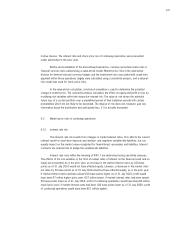 229
229 -
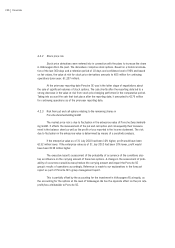 230
230 -
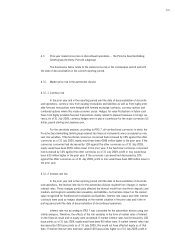 231
231 -
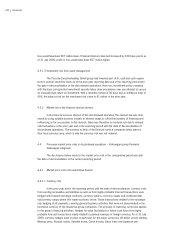 232
232 -
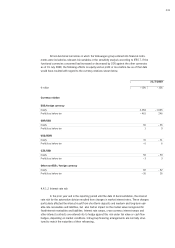 233
233 -
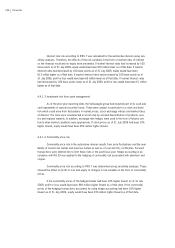 234
234 -
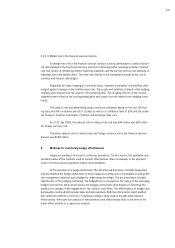 235
235 -
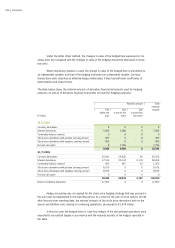 236
236 -
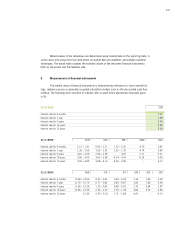 237
237 -
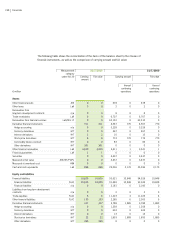 238
238 -
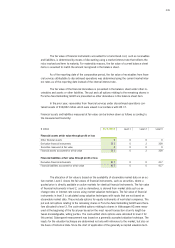 239
239 -
 240
240 -
 241
241 -
 242
242 -
 243
243 -
 244
244 -
 245
245 -
 246
246 -
 247
247 -
 248
248 -
 249
249 -
 250
250 -
 251
251 -
 252
252 -
 253
253 -
 254
254 -
 255
255 -
 256
256 -
 257
257 -
 258
258 -
 259
259 -
 260
260 -
 261
261 -
 262
262 -
 263
263 -
 264
264 -
 265
265 -
 266
266 -
 267
267 -
 268
268 -
 269
269 -
 270
270 -
 271
271 -
 272
272 -
 273
273 -
 274
274 -
 275
275
 |
 |

232 Financials
loss would have been €57 million lower. If market interest rates had increased by 100 base points as
of 31 July 2009, profit or loss would have been €57 million higher.
4.3.1.3 Investment risk from asset management
The Porsche Zwischenholding GmbH group had invested part of its cash and cash equiva-
lents in special securities funds as of the prior-year reporting date and in the reporting period until
the date of deconsolidation of the discontinued operations. Here too, investment policy complied
with the basic principle that investment security takes clear precedence over any attempt to secure
an unusually high return on investment. With a retention period of 30 days and a confidence level of
95%, the value at risk for the investment risk came to €1 million in the prior year.
4.3.2 Market risk in the financial services division
In the financial services division of this discontinued operation, the interest risk was mini-
mized by using suitable business models or interest swaps to offset the burdens of financing and
refinancing as far as possible. In this division, there was therefore no material risk due to interest
rate fluctuations in the prior year and in the reporting period until the date of deconsolidation of
discontinued operations. The business activity of the financial service companies takes place in
their local currency area, which is why the currency risk was not material.
4.4 Prior-year market price risks in discontinued operations – Volkswagen group (formerly:
Volkswagen subgroup)
The disclosures below relate to the market price risk in the comparative period and until
the date of deconsolidation in the current reporting period.
4.4.1 Market price risk in the automotive division
4.4.1.1 Currency risk
In the prior year and in the reporting period until the date of deconsolidation, currency risks
from existing receivables and liabilities as well as from highly probable forecast transactions were
hedged with forward exchange contracts, currency options, currency swaps and combined inter-
est/currency swaps where this made economic sense. These transactions related to the exchange
rate hedging of all payments covering general business activities that were not denominated in the
functional currency of the respective group companies. The principle of matching currencies applies
to the group’s financing activities. Hedges for value fluctuations in future cash flows from highly
probable forecast transactions mainly related to planned revenues in foreign currency. As of 31 July
2009, currency hedges were in place in particular for the major currencies US dollar, pound sterling,
Mexican peso, Russian rouble, Swedish krona, Czech koruna, Swiss franc and Japanese yen.
